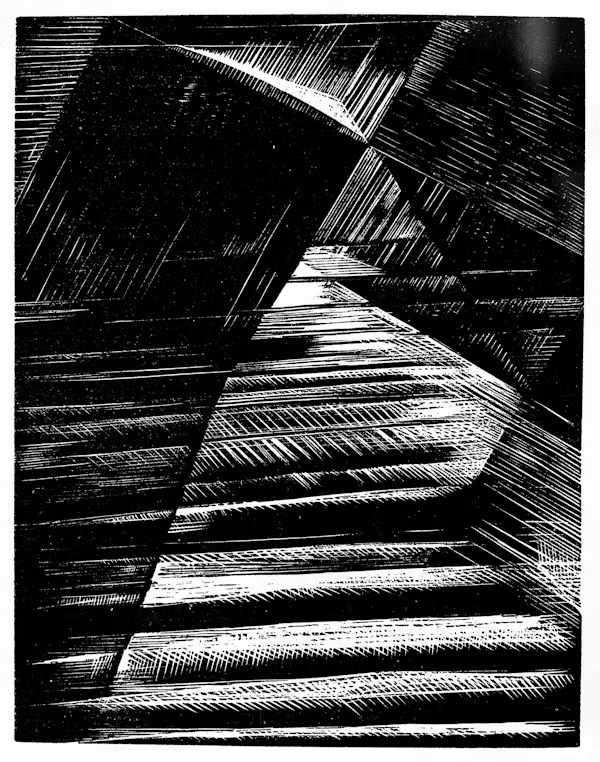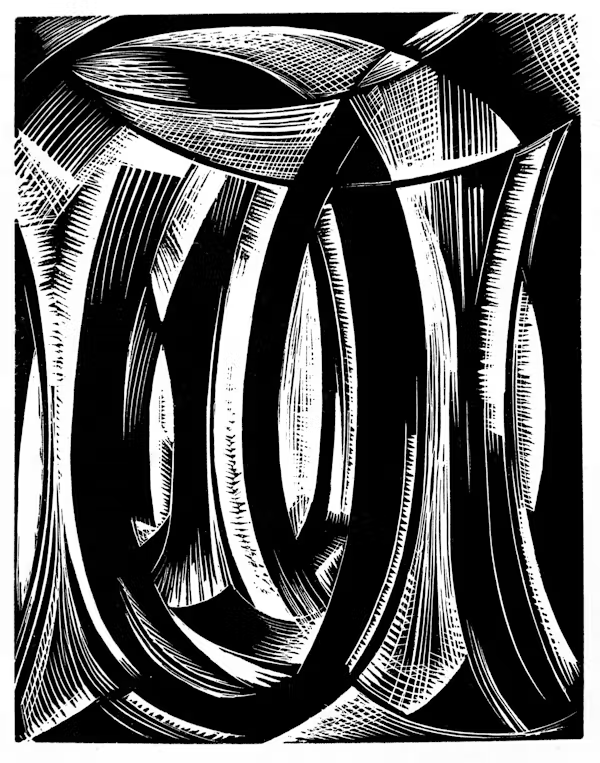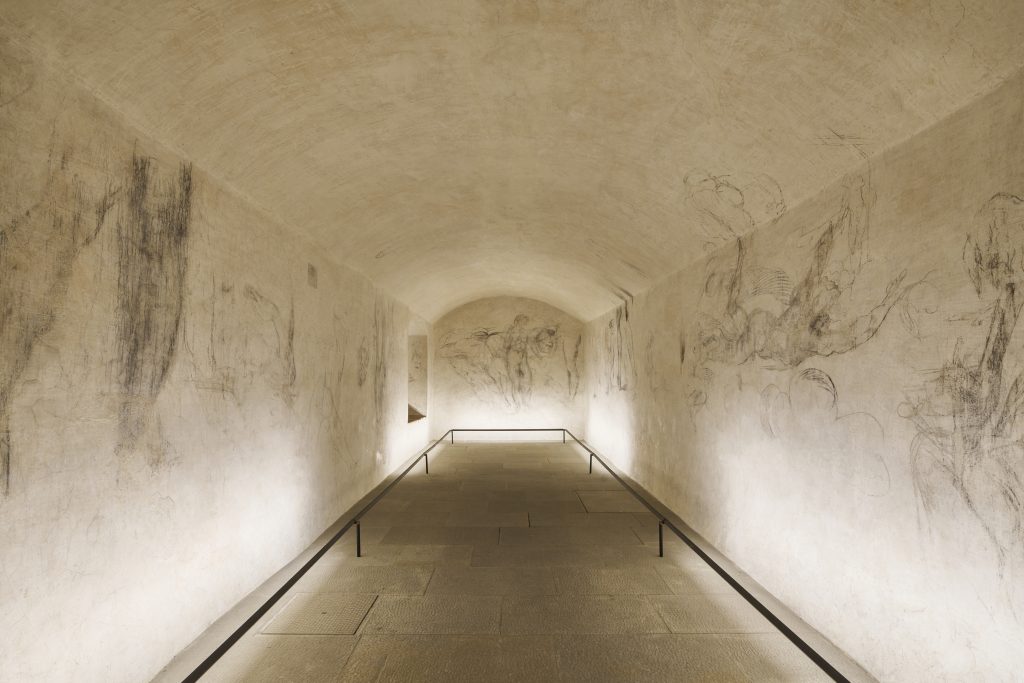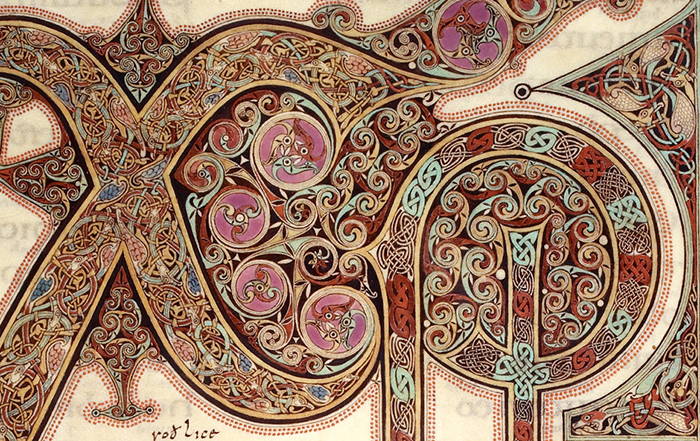
Paul Nash, “The Division of Light from Darkness”
I recently read Karol Wojtyla’s (St. John Paul II) retreat text God is Beauty: A Retreat on the Gospel and Art. Delivered to a group of artists in Krakow during Holy Week in 1962, this set of talks invites the retreatants to reflect on the meaning of the beauty of God, the creative life and process, and the centrality of prayer in the creative life.
It is this last theme that I’d like to briefly reflect on in this post. Wojtyla’s point is not simply that it is important for these artists to pray, but also that prayer itself can be a creative act. He makes this connection around the theme of silence.
Before turning to silence, Wojtyla offers a simple thought about prayer so often forgotten—“The essence of prayer is conversation.” Conversation, of course, requires at least two participants for the requisite back and forth, but conversation also requires silence. Even if only for the smallest sliver of a moment, in a conversation one must, at some point, pause to listen. The lack of the pause, either because of ignorance, or more likely, the anticipated terror that the silence will last forever, often keeps prayer from being a conversation. While the first mistake of prayer is never to begin, the second mistake is to leave no room for a response, no space to listen.
Reflecting on the necessity of silence in prayer, I am reminded of a section in Anthony Bloom’s Beginning to Pray. When Bloom was a newly ordained priest, an elderly woman described a problem she was having with prayer. She told him that she had been practicing the Jesus Prayer for years and years but that she had never gotten anywhere with it. Boldly, Bloom simply asks her if she had ever paused to listen. Instead of only speaking, he suggested, she might try listening.
Though initially offended by his brashness, the woman decides to try it. Here is what she reported back to him. Initially, the silence gave her the chance to appreciate where she was and what she had. The silence gave her space in which to cultivate gratitude, even for what we would call her modest circumstances. Then something else happened, as she slipped deeper into silence:
“I perceived that this silence was not simply an absence of voices, but that the silence had substance. It was not absence of something but presence of something. The silence had a density, a richness, and it began to pervade me. The silence around began to come and meet the silence in me…All of a sudden I perceived the silence was a presence. At the heart of silence there was He who is all stillness, all peace, all poise.”

To connect this back to Wojtyla and the retreat, listening in the way she describes is a creative act, and risky too, like all creative acts, because it involves a kind of surrender of control. It is that fear of surrender that so often keeps us from allowing silence, let alone slipping into silence. If we consider the lack of silence in our lives at all, we are likely to blame those things we believe are unique to our time and place—distraction, technology, busyness—but the spiritual masters tell us that there has always been a deeply human aversion to silence. The fear of silence is the fear of absence, the fear that silence is nothing but void. The woman’s reflection on the power of silence, however, points beyond this fear. To trust in silence is to trust that what seems a void might become a womb.
Wojtyla’s point is that in prayer the spiritual life is birthed in silence and by analogy much art is birthed in silence too. Like Bloom, Wojtyla describes the necessity of listening in prayer:
“Yet prayer is a conversation. Perhaps we don’t have to say so much; perhaps we don’t have to tell God so many of our grievances, but simply listen. What does he want to tell me? Perhaps underneath all of my words, grievances, and regrets there is some issue that he wants to bring to the fore and point to! And that is the turning point! The moment that sometimes determines my entire life! Because if he speaks to me, he is doing so in order that I might become a better person, more similar to him. After all, I am—that is the assumption—similar to him, created in his image and likeness.”
A second observation is that when we treat prayer more like a conversation built on back and forth and on silence, it begins to conform to the shape of worship itself. As in prayer so in the liturgy. When it comes to worship, we don’t start the conversation. We join the conversation. The liturgy is built on this fundamental rhythm, the back and forth of God speaking and us listening and responding.
Worship, like prayer, depends upon the rhythm of conversation. Liturgy, the work of the people, only really works when there is a back and forth, a call and response. The call of the liturgy finds its source in the creative voice of God, in and through his saving acts. All worship, but liturgical worship in an explicit way, moves to the rhythm of back and forth, the call and response, a rhythm sourced by a more fundamental rhythm—God speaks/creates/redeems and his people respond. The praise of creation, and Wojtyla calls this the prayer of creation, is a response to the creative act of God, not simply the first set of “Let there be’s” but the ongoing, upholding, and loving word that sustains creation now.
The Song of the Sea recorded in Exodus 15 is the ecstatic response to what God had done in delivering them from Egypt and through the Red Sea. I mention that particular example because that song may be the oldest bit scripture there is and so by extension may be the oldest strain of liturgy that we have, the first recorded response to the saving act of God. The song was a creative act in itself, the very human desire to praise what is praiseworthy, to craft the language and the rhythm of music in a way that befits what the song sings of, which leads us to a the final observation—Wojtyla insists that work can be prayer too.
As he says, “There is no issue in our lives, there is no activity, there is no effort, which cannot be turned into a prayer.” His admonition to the artists is that they be people of prayer, who enter into the conversation, who practice silence, letting the seeming void become a creative womb, and this too applies to their work. If they will see it in this way, their work too might be prayer because their creativity can be a kind of conversation, wherein silence becomes the seed bed of creativity, and where the work itself is a response to the voice they hear in silence.
Images taken from https://publicdomainreview.org/collection/paul-nash-genesis/



